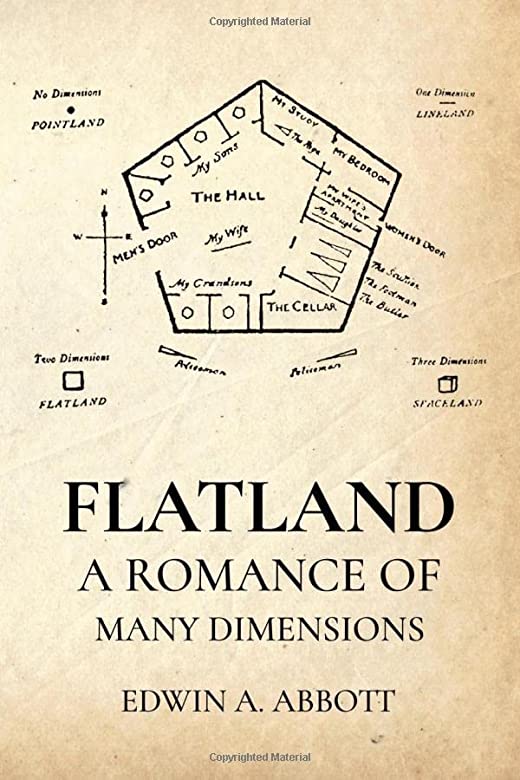
A society exists in a location commonly known by its inhabitants and neighbors. However, its civilization resides in a plane though familiar yet unreachable by mankind. This bizarre place is called “Flatland.” An intriguing novella written by Edwin A. Abbot in 1884, Flatland expresses a theoretical world that exists in the second dimension. The protagonist, a Square, has four identical sides with a height infinitely small, considered negligible and counted as zero. A class system exists in this fictional world in which an amount of sides determines one’s level of hierarchy: the more sides an individual has, the higher social status he possesses.
The story is divided into two parts. In the first part, Flatland was described in meticulous detail. Abbot covered the climate, the direction, the women, the priests, and the doctrines. This part sets the foundation and serves to orient the readers to the Square’s world and perception. Part II continues with descriptions about the other worlds that are different from Flatland.
The curious protagonist conceptualizes a world with one fewer dimension as its own: Lineland. Those residing in this world see zero dimensions; a point infinitely small, almost like a representation in a 0-dimensional plane. Upon having this idea and thinking about a challenge question from his own son, the Square is later greeted with a being that possesses god-like capabilities. The Great Sphere, an entity of wisdom of the third dimension, one day passes through the plane of existence belonging to Square. As the protagonist observed this crossing of paths, he noticed that this Sphere, with infinitely many sides, is socially considered that of a God, which is perhaps why it possesses those capabilities. Inquiring about the changing of its size, the Square learns the concept of height to the Sphere, and the two become good friends.
The fourth dimension, although deemed impossible by the Great Sphere, is conceptualized by Square when the Great Sphere gave up on him for persisting with this notion inconceivable by the Great Sphere. Square proceeds to teach his new dimensional enlightenment to his own kind without success and was arrested for spreading heresy. Though Square would be punished for expressing knowledge of higher dimensions to others in his world, he would leave a lasting impression in Flatland about the third, and even the fourth dimension. The imprisonment of Square can be reflected in the world we live in today. As an example, Nicolaus Copernicus was ridiculed and punished for saying that the Earth revolves around the Sun. An entire century later, his theory was finally proven to be true.
This well-written book thoughtfully explains how lower dimensions perceive higher ones, and vice versa. Many versions of this literature contain annotations and illustrations by world-renowned mathematicians and physicists. There is greater value gained through understanding these drawings should the readers ever feel they may come up short on imagination. This book is well worth re-reading, since a deeper level of understanding may be obtained as well on the philosophical level. Our library carries the annotated version that may seem like a larger book, with the actual Flatland appearing about a quarter into the book. Readers can choose to read the story first or benefit from the sidebar annotation along the way. I would recommend this book to all ages, as it may enlighten younger individuals to theorize about higher dimensions and contemplate the value of maintaining an open mind.
